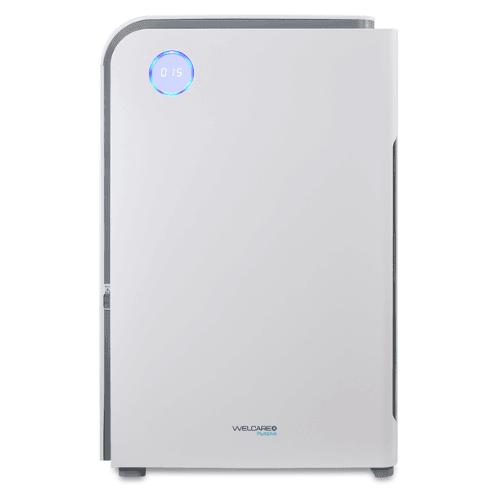Welcare PureAir Household Air Purifier review: Breathing made easy
Summary
Quick verdict: If you're after a simple and flexible larger room air purifier, the generally quiet and easy operation of the Welcare PureAir Household Air Purifier makes it an easy recommendation, as long as you can live without a remote control or app.
- Quiet operation
- 6-stage air filtering
- Great odour removal
- Simple air quality warnings
- CADR is only moderate
- Won't filter everything
- High speed fans can be noisy in smaller spaces or up close
- No smartphone or remote control options
Everyone needs to breathe, but at certain times of the year in Australia this can be a less than optimal experience. An air purifier can take the edge off bushfire smoke, reduce odours in the house and even help to reduce the risk of spreading viruses and bacteria.
Welcare's larger home air purifier offers a very simple and pleasant measure of your home's air quality, generally quiet operation and a 6-stage filter that captures most of the particles you probably don't want to be breathing in any noticeable quantity.
Design: A big white suitcase with numbers on the side
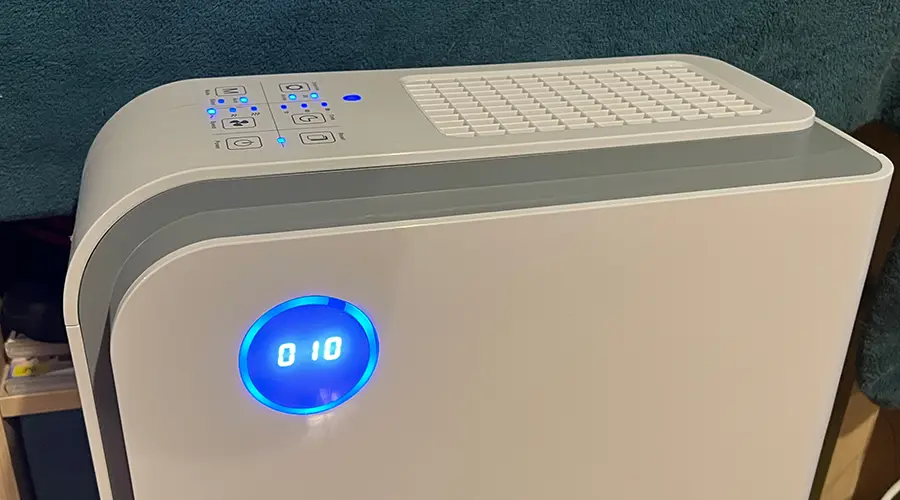
Image: Alex Kidman
The Welcare PureAir Household Air Purifier is designed to clear air in larger rooms, which necessitates a larger filter. Specifically, it measures in at 402x187x624mm and weighs 8.3kg with all filter components installed. It's a plain white plastic enclosure that looks rather like a shiny suitcase with an LED display on the side.
That LED display is for air quality, with both a number and colour scheme designed to give you an at-a-glance view of your area's air quality. If it's blue it's perfect, if it's green, it's still good, purple for normal or red for bad.
I did hit red a few times in my testing, and while it was obvious why it was reacting at the time, it's not as though red air is going to kill you outright. The combination of number and colour does give you a good appreciation for how the Welcare PureAir Household Air Purifier is operating.
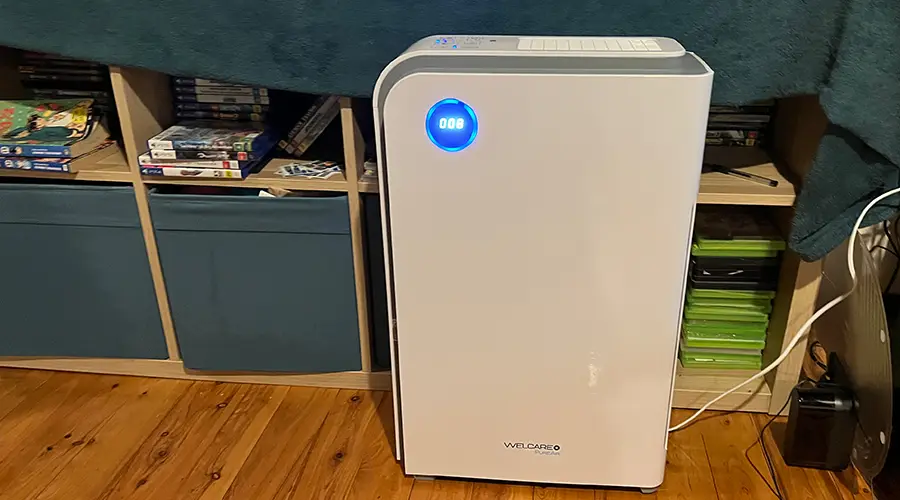
Image: Alex Kidman
Set-up involves installing each of the filters in turn, although this is quite easy. You basically just pop the side off the casing, slide each filter out of its plastic bag and put them in place, from the pre-filter through to the photo-catalyst filter and UV lamps and you're good to go.
As with any filter, over time they're going to get clogged with the material they catch. Welcare's claim is that they should be good for 12 months for the HEPA and Carbon filters, and 3 years for the photocatalyst filter.
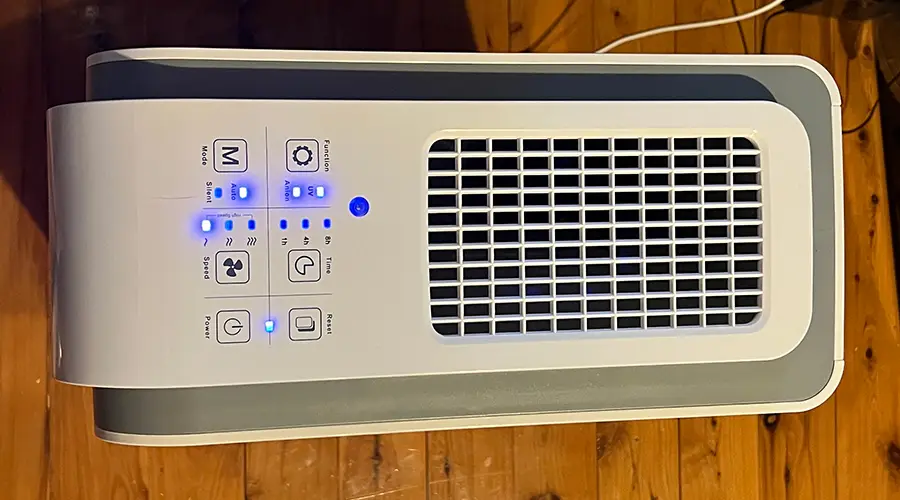
Image: Alex Kidman
The top of the Welcare PureAir Household Air Purifier houses an array of buttons that enable timer modes, fan speed operation and UV/Anion generation modes. It's simple enough to wrap your head around, although depending on room size and needs you may need to play around with which speeds and modes work best for you.
There's no app control if you like that kind of thing, and there's no remote control to lose under the sofa either. The base operation of power also wouldn't allow for the use of smart plugs if you wanted to make the Welcare PureAir Household Air Purifier part of your general smart home set-up either.
Performance: Great for odours and smoke (and maybe viruses)
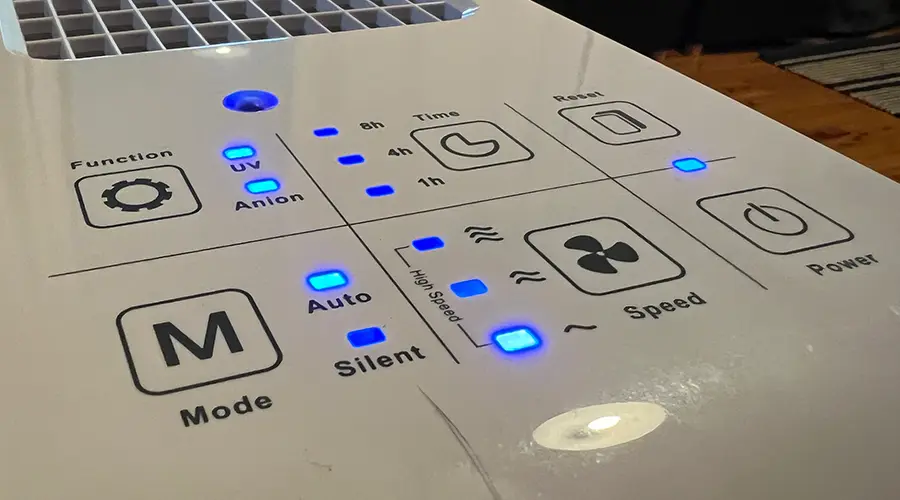
Image: Alex Kidman
Once I'd set up the Welcare PureAir Household Air Purifier, it was time to start testing it. The basic operation, like any air purifier is quite simple. Press the power button, decide on your settings and within a few seconds "cleaner" air starts flowing out from the vent at the top of the unit.
How clean is "clean" in this context, however?
There's a big and present challenge for any review of any air filtration system outside of very specific lab settings, which, to be clear, I do not possess access to. Most people buying air filtration systems for the home are doing so to improve air quality and personal health. That's particularly important within a global pandemic with an airborne virus in play.
Welcare is quite careful about what it claims the Welcare PureAir Household Air Purifier can and cannot do, and it's worth knowing what it all means before you buy. It uses 6-stage filtering, passing air through a simple mesh filter, H13 HEPA filter, carbon filter, photocatalyst filter, ionizing filter and UV light filter.
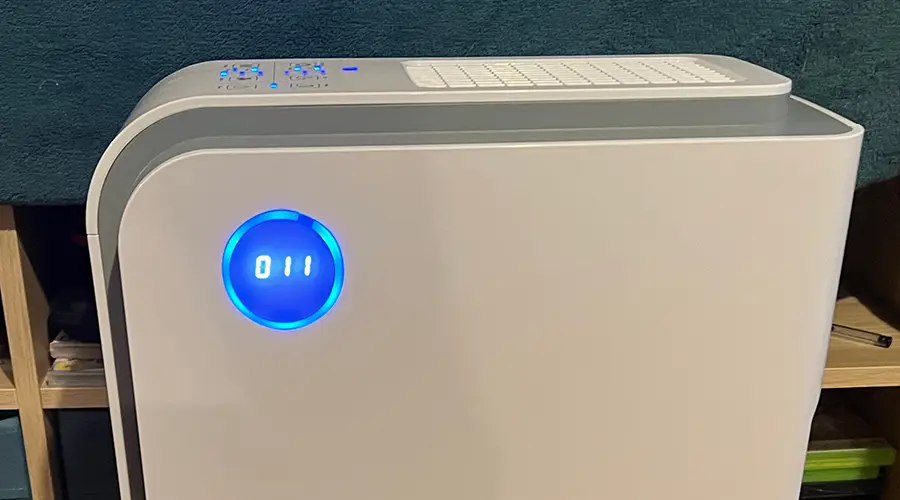
Image: Alex Kidman
If you can get past that much science, you must be pumping out pretty clean air, right? Sort of, but it's worth diving a little deeper into those claims.
The HEPA filtration mechanism used by the Welcare PureAir Household Air Purifier is rated at H13, and the odds are pretty good that you're not au fait with what that means, beyond sounding sort of medical in concept. H13 refers to the filtration efficiency of the system. Cheaper air purifiers effectively let larger particles through, which means they do a less effective job of filtration. At H13, a filter should be able to filter through an average of 99.95% of particles.
The obvious question here is whether that's enough for viruses such as COVID-19, and the answer is yes, maybe, and sort of, in that order.
At a technical level, an H13 filter is capable of capturing particles 0.3 micrometres in diameter. Virus particle sizes can vary to less or more than that size, and research here does suggest variance that could skip past the filter body.
Call me crazy, but I wasn't willing to risk catching COVID-19 in order to test whether the Welcare PureAir Household Air Purifier was actually doing its job, not that I would have been able to check the filter in any case. Nobody is yet producing a Rapid Antigen Test for purifier filter bodies, after all.
The spread mechanism for COVID-19 means that it would always be possible to catch it elsewhere, or to breath in particles that hadn't yet been touched by the Welcare PureAir Household Air Purifier. Welcare, for its part, does note that it's not intended to be sold as a therapeutic device.
It's rated for a CADR (Clean Air Delivery Rate) of 310m3/h, which isn't the quickest for a unit of this size. If you do need a large area regularly cleaned quickly, other options with faster flow rate might be a better bet.
All of this means that any consumer review is essentially observational, rather than strictly scientific. The Welcare PureAir Household Air Purifier's air quality meter does give you something of a rolling indication of relative air quality, but not of (for example) viral loads captured if they are in fact present.
What I can say about the Welcare PureAir Household Air Purifier is that it observationally can do quite a good job of clearing up the air in larger rooms and making it more generally breathable… which I can assume is healthier, even though I can't test that in a biological way. My own home is an older domicile with rather odd air flow, which means some rooms can get very musty very quickly.
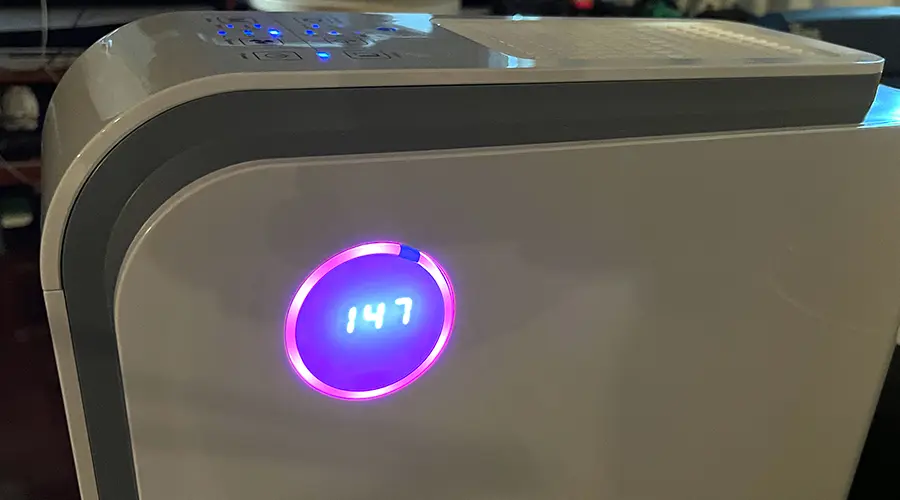
Image: Alex Kidman
Putting the Welcare PureAir Household Air Purifier into them for an hour or so cleared that obvious mustiness. Same story for putting it in a teenager's bedroom, which smelled like, well… a teenager, until I put the purifier to use. Even in rooms where I'd often have a simple fan going, it wasn't hard to pick the air quality difference after a relatively brief period of usage.
In my open plan living room, it was interesting to watch the air quality vary over time and differing activities. Running a barbecue on a verandah outside that room sent the Welcare PureAir Household Air Purifier into its only frenzy of "red" air quality during my review period. It really wasn't hard to see why it was reacting that way, or working its hardest to clean up the air filled with delicious (but probably not all that healthy) bacon grease particles.
If you do need faster room air clearing, whether it's for inadvertent barbeque smoke, mould particles or viral protection potential, you may want to ramp up the fan speed. The Welcare PureAir Household Air Purifier does get rather noisy at full whack if you're near enough to it. It's not intended as a cooling fan to speak of, so you don't need to place it super close most of the time. Even in auto mode, outside my brief forays into the red zones, it doesn't seem to need to do this all that often.
Should you buy the Welcare PureAir Household Air Purifier?
- Buy it if you're concerned about in-home or small office air quality.
- Don't buy it if you're looking for a rock-solid medical device.
Makers and sellers of air filters do need to be clear and precise about their claims about what any air purifier can do. Welcare scores well in this regard, keeping the hype low and delivering an air filtration system that, at least from an observational level, does seem to live up to those claims. Over a 2-week testing period in various rooms in my house, I've been able to observe it clearing the air nicely.
Will that keep me safe from every germ and nasty lurking out there? Maybe, and maybe not, but I do know that it will do the trick nicely for matters like burnt barbeque sausage odours, or more pressingly in the Australian context, bushfires.
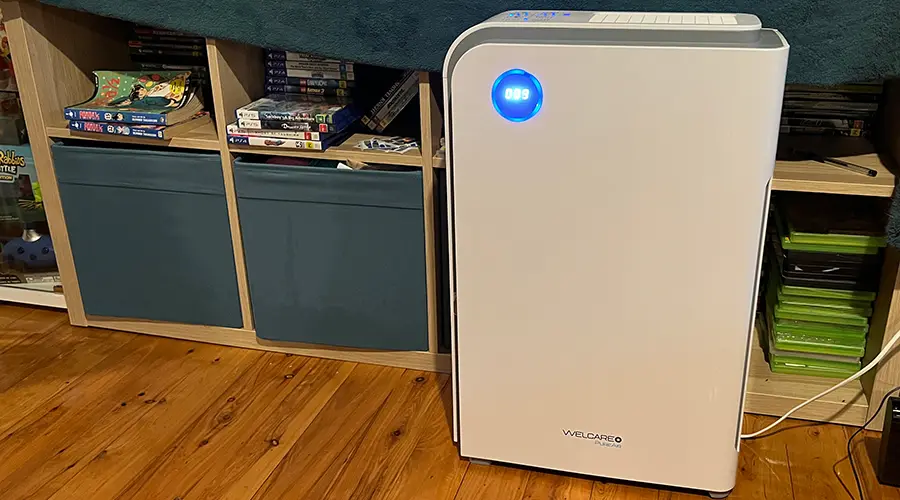
Image: Alex Kidman
Pricing and availability
Specifications
Specs
Features
How we tested
I was given the Welcare PureAir Household Air Purifier for the purposes of review. I tested it in my Sydney home, where 5 adults/teenagers live, along with 3 cats. I used the Welcare PureAir Household Air Purifier in both large open plan areas of the house as well as more enclosed rooms. It's not the most portable filter, and possibly overkill for smaller rooms, but this enabled me to assess both subjective air quality and speed of filtering, as well as incidental noise issues.

